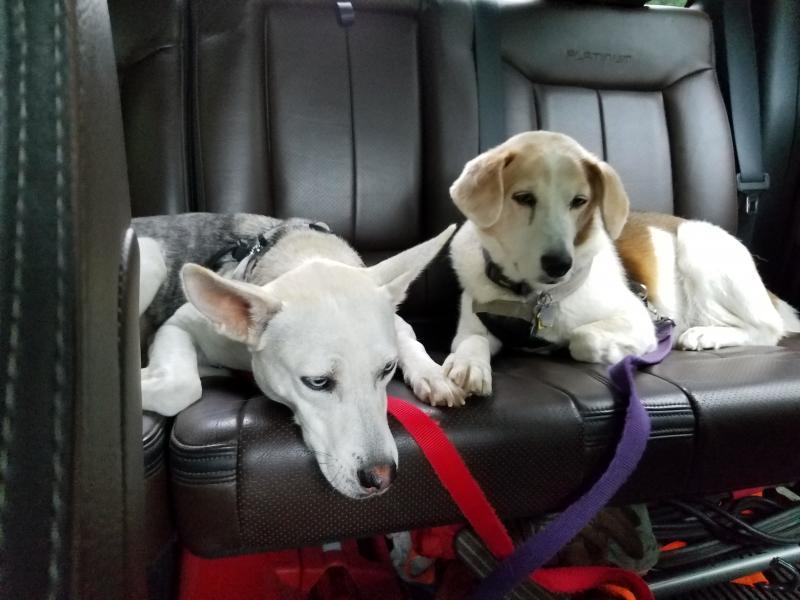Lost Pet Rescue Services A Comprehensive Guide

Losing a beloved pet can be a traumatic experience for any pet owner. The fear, worry, and uncertainty surrounding their disappearance can be overwhelming. Fortunately, there are numerous lost pet rescue services available to help reunite you with your furry companion. In this comprehensive guide, we will explore everything you need to know about lost pet rescue, from understanding animal control procedures to implementing effective prevention strategies.

Lost Dog and Cat Animal Rescue
When a pet goes missing, the first step is to act quickly. Begin searching your immediate neighborhood, calling your pet’s name, and checking common hiding places. Simultaneously, utilize online resources such as:
- PetFinder: A national database of lost and found pets with advanced search filters.
- Nextdoor: A social networking platform for neighborhoods, allowing you to post detailed information about your missing pet with the local community.
- Facebook Groups: Join local lost pet groups where concerned citizens share sightings and updates.
These online resources can greatly increase your chances of finding your lost pet by reaching a wider audience and providing helpful tools for searching.

Lost dog and cat animal rescue Near Me
One of the most important things to do when your pet goes missing is to search your immediate neighborhood. According to a study by the ASPCA, 59% of lost cats were found within one block of their home, while 20% of lost dogs were found within a two-mile radius. This means that it is crucial to thoroughly search your neighborhood before expanding your search area.
Here are some tips for searching for your lost pet in your area:
- Call out your pet’s name: Your pet may recognize your voice and come out of hiding.
- Check hiding places: Cats may hide in small spaces like under porches or in bushes, while dogs may seek shelter in garages or sheds.
- Ask neighbors: Inform your neighbors that your pet is missing and ask them to keep an eye out.
- Use a flashlight: If searching at night, use a flashlight to look for reflective eyes or other signs of your pet.
In addition to these tips, it is important to remain calm and focused during your search. Pets can sense when their owners are stressed, so try to stay positive and determined.

The Heartwarming Tale of 777 Charlie A Real Dog’s Story
What Does Animal Control Do with Lost Dogs
Animal control facilities play a crucial role in reuniting lost pets with their owners. When a lost pet is found, they are typically brought to the local animal control facility. Here is what happens to lost pets at animal control:
- Scan for microchips: Most animal control facilities have scanners that can detect microchips in pets. This allows them to quickly identify the owner and contact information.
- Hold for a designated period: Animal control will hold the pet for a certain amount of time, usually 3-5 days, to give the owner a chance to claim their pet.
- Place unclaimed pets for adoption: After the holding period, unclaimed pets are made available for adoption to new families.
It is important to note that each animal control facility may have different procedures for handling lost pets. It is always a good idea to contact your local facility and inquire about their specific policies.

Can Dogs Find Lost Cats?
Many pet owners wonder if their dog can help them find their lost cat. While there is no definitive answer, there have been many cases where dogs have successfully located lost cats. Dogs have a keen sense of smell and can pick up on scents that humans cannot. They can also be trained to track specific scents, making them valuable assets in the search for a lost pet.
However, it is important to consider the individual personalities of your pets. Some dogs may not get along with cats and may not be helpful in finding a lost feline friend. It is also important to supervise any interactions between your dog and a lost cat, as they may not be friendly towards each other.

Does Animal Control Pick Up Lost Dogs?
Animal control does not actively search for lost pets, but they may pick up a lost dog if it is found wandering on its own. If your dog is picked up by animal control, they will follow the procedures mentioned above, including scanning for microchips and holding the dog for a designated period of time.
It is important to note that if your dog is picked up by animal control, you may be required to pay fees for their care and housing. These fees vary depending on the facility and can range from $10-$100 per day. This is another reason why it is crucial to act quickly in searching for your lost pet.
Lost Pet Rescue Services
In addition to utilizing online resources and searching your immediate neighborhood, there are also professional lost pet rescue services available. These services specialize in finding lost pets and have a high success rate in reuniting them with their owners.
Some popular lost pet rescue services include:
- Lost Pet Professionals: A team of trained professionals who use specialized techniques to track and capture lost pets.
- Missing Pet Partnership: A non-profit organization that offers free advice and resources for finding lost pets.
- PetAmberAlert: A service that sends out alerts to local shelters, veterinarians, and neighbors when a pet goes missing.

These services often utilize advanced technology and techniques, such as setting up traps or using tracking dogs, to help locate lost pets. While they may come at a cost, many pet owners find them to be worth the investment in order to bring their beloved pet back home.
Hope Cat Rescue Saving Feline Lives One Paw at a Time
Finding Lost Pets in Your Area
Aside from utilizing online resources and professional lost pet rescue services, there are also other ways to increase your chances of finding your lost pet in your area. Here are some additional tips:
- Post flyers: Create and distribute flyers with a clear photo of your pet, their name, and your contact information. Hang them in public places such as community centers, grocery stores, and veterinary clinics.
- Contact local shelters and veterinarians: Call or visit nearby shelters and vet clinics to inform them of your missing pet. Provide them with a flyer or photo to keep on file.
- Offer a reward: Consider offering a small reward for anyone who finds and returns your pet. This can motivate people to actively search for your pet and increase the chances of a successful reunion.
It is also important to stay vigilant and continue searching even after a few days have passed. Some lost pets may wander further from home or be picked up by someone who may not know how to find their owner.
Animal Control Procedures for Lost Pets
As mentioned earlier, each animal control facility may have different procedures for handling lost pets. However, there are some general guidelines that most facilities follow. Here are some common procedures for lost pets at animal control:

- Holding period: As mentioned before, animal control will hold a lost pet for a designated period of time, usually 3-5 days. This allows owners time to claim their pet before it is made available for adoption.
- Microchip scanning: All found pets are scanned for microchips, which can greatly increase the chances of reuniting them with their owners.
- Vaccinations and health checks: Animal control will often provide basic vaccinations and health checks for found pets to ensure they are healthy and safe to be around other animals.
- Behavioral assessments: Some facilities may also perform behavioral assessments on found pets to determine their temperament and any potential issues that may arise when placing them for adoption.
It is important to note that if you believe your pet is at an animal control facility, you should contact them immediately and provide proof of ownership. This will ensure that your pet is not adopted out to someone else.
Reuniting Lost Pets with Their Owners
The ultimate goal of lost pet rescue services and animal control facilities is to reunite lost pets with their owners. Here are some tips for successfully reuniting with your lost pet:
- Keep your contact information updated: Make sure your pet’s microchip and ID tags have your current contact information. This will make it easier for someone to contact you if they find your pet.
- Stay in touch with animal control: If your pet is picked up by animal control, be sure to stay in touch with them and check in regularly to see if your pet has been found.
- Be persistent: Don’t give up on searching for your lost pet. Continue to utilize online resources, post flyers, and reach out to local shelters and veterinarians.
- Consider a GPS tracker: If your pet tends to wander or escape frequently, consider investing in a GPS tracker. This can help you quickly locate your pet if they go missing again in the future.
Remember, the key to successfully reuniting with your lost pet is to act quickly, stay calm, and use all available resources.

Lost Pet Prevention Tips
While losing a pet can be a traumatic experience, there are steps you can take to prevent it from happening in the first place. Here are some tips for keeping your pet safe and secure:
- Microchip your pet: Microchipping your pet greatly increases the chances of being reunited with them if they go missing. Be sure to keep your contact information updated with the microchip company.
- Secure your yard: Make sure your yard is properly fenced and secure to prevent your pet from escaping.
- Use ID tags: In addition to a microchip, make sure your pet wears an ID tag with your current contact information.
- Spay or neuter your pet: Unaltered pets are more likely to wander and escape in search of a mate.
- Train your pet: Proper training can help prevent your pet from running away or getting lost.
- Keep your pet on a leash: When outside, always keep your pet on a leash to prevent them from wandering off.
-

By taking these preventative measures, you can greatly reduce the chances of losing your pet and the stress and worry that comes with it.
Conclusion
Losing a pet can be a devastating experience, but there are numerous resources available to help reunite you with your furry companion. From utilizing online resources and professional lost pet rescue services to understanding animal control procedures and implementing prevention strategies, this comprehensive guide has covered everything you need to know about lost pet rescue. Remember, acting quickly and staying persistent are key to successfully finding your lost pet.

